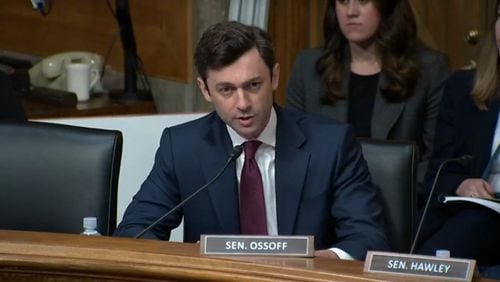Lawmakers appear poised to try something new to help struggling communities in rural Georgia and our neighbors from Blue Ridge to Thomasville are no doubt glad to receive the attention. Ideas floated recently by a state House study committee range from expanding broadband access to paying professionals to relocate to rural communities.
Here are three other strategies that will benefit Georgians across the state, while giving an extra boost to people who live and work in rural areas.
Create a state-level Georgia Work Credit. People who live in Georgia's rural communities are more likely to file for the existing national version, or the federal Earned Income Tax Credit. In the majority of Georgia's rural counties at least 30 percent of tax filers claim the tax credit. Georgia can join 29 other states by offering a state-level version of the tax credit, giving working families a bottom-up tax cut while pumping new dollars into local economies and communities. The cost to the state treasury is about $300 million for a Georgia Work Credit set at 10 percent of the federal version. You'll hear proposals in coming weeks to slash the state income tax rate, which will drain the state budget of resources to invest in rural Georgia's schools and health care system. Creating a Georgia Work Credit is a sounder strategy.
Stabilize the rural health system and get more Georgians insured. Now is the time for Georgia lawmakers to support struggling rural hospitals, address the opioid crisis and close the health care coverage gap for 240,000 Georgians through Medicaid expansion. The state can't afford another year of turning down billions of federal dollars that can be used to stabilize rural health systems, create thousands of jobs and provide health coverage to working Georgians. Georgia's cost to give health care access to 240,000 people who make too little for marketplace coverage and too much for Medicaid will average an estimated $136 million per year over the next four years. A straight expansion of Medicaid income eligibility is more cost-efficient. But if state lawmakers settle on a plan to secure a waiver to allow more customization, that still gives rural hospitals a financial boost and improves the quality of life in rural communities.
Give adult students better access to HOPE. Forty-four percent of Georgia's technical college associate's degree students are older than 25 and one-third of the state's technical colleges serve a rural community. Expanding the HOPE program's age eligibility so it doesn't expire seven years after high school graduation will give older students a better chance to improve themselves and contribute to the local economy. Adult students often take time after high school to work and care for their families. When they age beyond the seven-year time limit they are left to apply for federal grants, loans, or pay out of their own pocket. Removing the HOPE time limit will help about 7,000 more technical college students afford classes for a state investment of about $8.7 million.
It’s no secret rural Georgia is coping with daunting challenges these days. Elected officials and the business community are doing an admirable job generating tactics to shore up rural communities and make them more attractive places for middle-class families to settle. Most lack clarity on cost, return on investment, or both.
The three investment strategies outlined here offer the advantage that they are achievable, the costs are defined and so is the return for rural Georgia. If lawmakers act on them before the Legislature adjourns months from now, rural Georgians can get the urgent help they deserve. Rural Georgia can’t wait any longer.
About the Author





